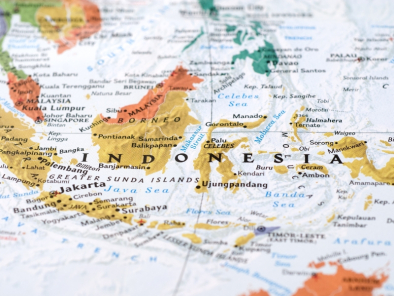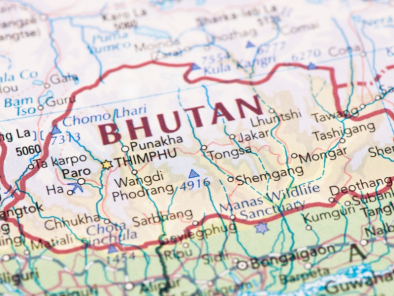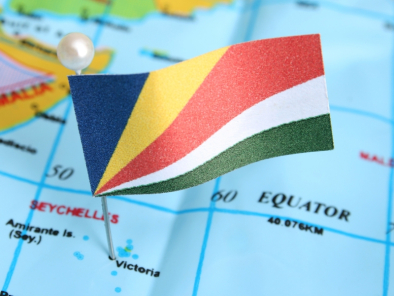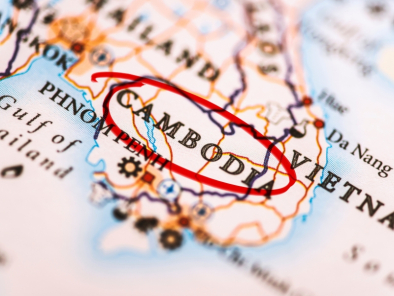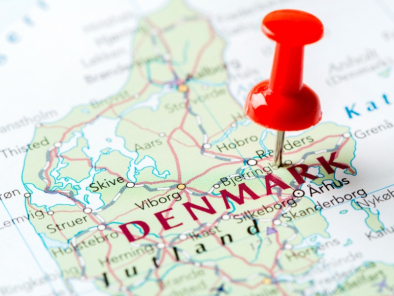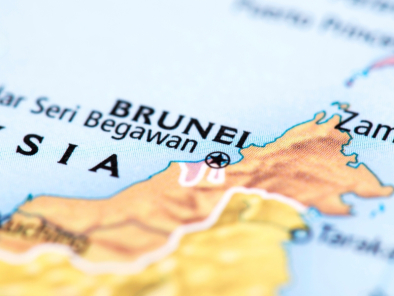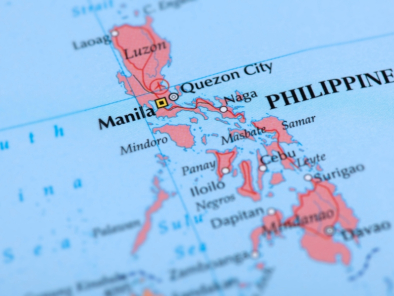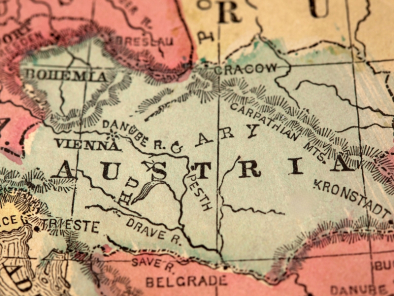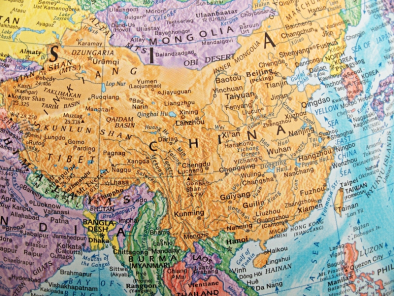TRAVEL
TIPS FOR MALAYSIA
The cultural melting pot of Southeast Asia, Malaysia
seamlessly blends the flavours of the Orient, India
and Europe.
VISA The visa can be obtained prior as well as on arrival in the country
CLIMATE:
Malaysia is hot and humid
all year so you're going to have sunshine and sweat pretty much whenever you
visit. It is; however, best to avoid the November to January rainy season on
Peninsula Malaysia's
East Coast if you want to enjoy the beaches. The time to see turtles on the
East Coast is between May and September.
Temperatures are usually
between 20-30°C (68-86°F); humidity is usually 90 per cent. The region has a
monsoon climate, but only the East Coast of Peninsular Malaysia has a real
rainy season. The wettest season on the West Coast of the peninsula is between
September and December; on the east coast and in Sabah and Sarawak
it's between October and February. Rain, when it comes, generally interrupts
the sunshine only briefly, most of it falls in short, strong bursts.
CURRENCY:
The Malaysian Ringitt (MYR) is
the official currency here.
All major credit cards are
accepted at upmarket hotels, shops and restaurants. If you have a credit card
with a personal identification number (PIN) attached; you can obtain cash
advances from ATM's. Banks in Malaysia
are linking to international banking networks, which allow you to withdraw
money from overseas savings accounts through ATM's. Check with your bank at
home to see if you can withdraw money from your home account while in Malaysia.
HOW TO GET THERE:
By Air: There are 4 Direct
Flights from India to Kuala Lumpur, viz., Air India, Indian Airlines, Jet
Airways, & Malaysian Airlines.
GETTING AROUND:
Malaysian Airlines (MH) is the
main domestic airline, servicing both the peninsula and Sabah and Sarawak. Fares are reasonable but it's unlikely that
you'll need to fly in Peninsula Malaysia
unless you're in a real hurry. It's cheaper to fly to East
Malaysia from Johor Bahru than from KL. In East
Malaysia, flying is often the only quick way to get around. Note
that flights in East Malaysia are frequently
fully booked during school holidays and are prone to delays due to the vagaries
of the weather.
Peninsula Malaysia has a fast, economical and
widespread bus system, and this is generally the best way to get around. Sabah has excellent roads, and minibuses ply the main
routes. Buses ply Sarawak's major trunk road,
but hardly anywhere else. Peninsula Malaysia
has a comfortable and sensibly priced railway system, but there are basically
only two lines: one linking Singapore
to Thailand
via KL and Butterworth, and the other branching off this at Gemas and heading
north-east to Kota Bharu. In Sabah, there's a narrow-gauge line through the Pegas River
gorge from Tenom to Kota Kinabalu, which is well worth catching.
In Peninsula Malaysia,
long-distance taxis are twice the price of buses but they're a comparatively
luxurious and efficient way to travel. If you want to get around by car, all
major car-rental firms have KL offices. There are no boat services between
Peninsula and East Malaysia, but fast boats ply the rivers of both Sabah and Sarawak.
Local taxis in Malaysia are
metered. Rickshaws have all but disappeared in KL, but they are still a viable
form of local transport in provincial areas. KL has a notoriously bad public
transport system, and peak-hour travel in the city should be avoided at all
cost.
ELECTRICITY:
The electrical current is 220-240 volts, AC 50Hz.
INFORMATION REGARDING THE MAJOR CITIES IN MALAYSIA:
KUALA LUMPUR
In 130 years, Kuala Lumpur has grown from nothing to a
modern, bustling city of well over a million people. Superficially, KL (as it's
almost universally known) may appear to be just another modern Asian city of
gleaming skyscrapers, but it retains much of the character and local colour
that has been so effectively wiped out in other Asian-boom cities such as
Singapore. It has plenty of colonial buildings in its centre, a vibrant Chinatown with street vendors and night markets, and a
bustling Little India.
MUST
SEES:
Dataran
Merdeka (Independence Square)
The official commemorative site
of Malaysia's
independence from colonial rule, visiting Dataran Merdeka is like stepping back
in time.
The picturesque square is
flanked by the mock-tudor Royal Selangor Club House (which still has an
exclusively male suite) and cricket green, enduring reminders of the days of
British government of the region. On the far side towers a 100m flagpole
(claimed to be the highest in the world) and a quaint 19th-century English
fountain. This was where the Union Jack finally came down on this particular
slice of the British Empire.
The nearby cathedral of St Mary
is a rare specimen of Gothic architecture, while beneath the square lies Plaza
Putra and its collection of little shops, cafés and the Actor's Studio theatre
and box office. A hub of life in the city, the square and its surroundings is a
great place to get the musty flavour of colonial Britain.
Sultan
Abdul Samad Buildings
This Kuala Lumpur icon was completed in 1897 and
is a fusion of Moorish, Moghul and British architectural design.
Previously housing British
colonial administration, the buildings now serves as a home to the Malaysian
judiciary. The copper cupolas on the circular stair towers on the façade are
impressive, while the arches give the building a South
Mediterranean air. The building's old-fashioned charm goes a long
way to usurping KL's more modern, and vastly more expensive motif, the Petronas Twin Towers.
The old post office is connected to the buildings and features a similarly
unusual style.
Petaling Street
This is the heart of Kuala Lumpur's Chinatown.
Continuously teeming with activity, the shops along Petaling Street offer practically
anything you may want to buy. Rummage your way through colourful textiles,
herbal medicines, chewy pork floss, and even funeral accessories and hell
money, to burn so that your dead ones can buy their way into heaven.
By early evening, the streets
become one huge pedestrian mall with stalls selling watches, clothes,
electronic goods, soft toys and everything else, propped higgledy-piggledy
against each other. Neon lights and bright red lanterns strung from one side of
the road to the other add to the festive atmosphere while the fragrant smell of
bah kua (barbecued meat) permeates the air.
Sri
Mahamariaman Temple
Jalan Tun H S Lee.
The oldest Hindu temple in Kuala Lumpur is adorned
with a fascinating array of Hindu deities in solid colours reaching towards the
sky.
The starting point of the annual
Thaipusam procession, the temple is structured to imitate the points of the
supine human body. Ladies in bright saris sit outside the door, weaving
fragrant jasmine bunches. Make sure to remove your shoes before entering the
temple.
Thean
Hou Temple
65 Persiaran Endah, off Jalan
Syed Putra
The Hainanese built this
fascinating construction to pay tribute to the Goddess of the Sea. It's one of Southeast Asia's largest temples, with six ascending
levels, an impressive multi-roofed entrance, ornately carved alabaster pillars,
and numerous carvings of dragons.
With almost 700 icons of the
goddess herself contained under the domed ceiling, sculptors somehow managed to
squeeze in a few more deities. Look out for the Gods of Longevity, Wealth,
Happiness and Prosperity among the statuary.
KL
Tower
Jalan Puncak
Among the top ten tallest
structures in the entire world (although not the tallest in Kuala Lumpur) it
treats the tourist to a spectacular all-round view of Kuala Lumpur by day or
night; and the viewing gallery comes in higher than the bridge on the king of
the KL skyline, the Petronas Towers. Pick a clear day or night to play
photographer or simply admire the view from the observation deck, then head to
the revolving restaurant for light refreshments or a whacking good buffet.
Open: 0900 – 2200 hrs
Petronas
Twin Towers
The world's third tallest
towers at just shy of 452 metres, the Petronas
Towers are a landmark of modern Kuala Lumpur.
The publicly accessible Skybridge
is located between the 41st and 42nd floors, a "mere" 170 metres
above ground level. It offers some tremendous views over the city, and the
chance to see some of the world's most innovative architecture, from the
inside. Queues may take a little time - and visitors should allow 45 minutes
for a visit. Tickets are limited so come early or risk disappointment.
Open: Tue - Sun 0900 hrs – 1900 hrs
Closed for Friday
prayers from 1300 hrs – 1430 hrs
Batu
Caves
The Batu caves are over 440
million years old and are part of the most southerly outcrop of limestone in
the world - meaning that their appearance is rather untypical of the landscape
in this part of the world.
An important religious sight
for Hindu believers, this is where the culmination of the Thaipusam procession
from the Sri Mahamariaman temple takes place
MELAKA
/ MALACCA
Melaka is an interesting blend
of Chinese, Portuguese, Dutch and British influences and is considered Malaysia's
most historic city. It was once the most important trading port in the region
but is now little more than a sleepy backwater. Ancient-looking junks still
sail up the river, imbuing the waterfront with a timeless charm, and the city
remains full of intriguing Chinese streets, antique shops, temples and nostalgic
reminders of the now-departed European colonial powers.
The most imposing relic of the
Dutch period in Melaka is the massive pink town hall, Stadthuys, built between 1641 and 1660. It's believed to be the
oldest Dutch building in Asia and displays all
the characteristic features of Dutch colonial architecture (read incredibly
weighty doors and pleasant louvered windows). The building houses government
offices and an excellent Ethnographic Museum,
which highlights aspects of local history and culture. The imposing ruins of St Paul's Church, built by the
Portuguese over 400 years ago, stand in a beautiful setting atop St Paul's Hill. It was
regularly visited by St Francis Xavier, who was buried here for a short period
before being transferred to Goa in India. The church fell into disuse
when the Dutch arrived, but is still surrounded by Old Dutch tombstones. The
Brits, with great sensitivity, used the church as a gunpowder store.
For those who prefer their
religious architecture to be a little more colourful, the Cheng Hoon Teng Temple in the old part of the city is the oldest
Chinese temple in Malaysia.
It was founded in 1646, and all of the materials and all of the artisans who
built it were imported from China.
The old part of Melaka is a fascinating area to wander around, and this is
where you'll find many of Melaka's famous antique shops; a stroll along Jalan
Hang Jebat will pass the best of them.
PENANG
The 285 sq. km (177 sq. miles) island of Penang,
off Peninsula Malaysia's
northwestern coast, is the oldest British settlement in Malaysia and one of the country's
premier resort areas.
MUST
SEES:
Fort Cornwallis
Founded on
the site of Francis Light's landing in 1786, Fort Cornwallis
was built to guard the harbour against a French attack that never came. Apart
from the still impressive outer walls there's not much else to see here. The
fort is still guarded seawards by its cannon battery and although they have
never been fired from Cornwallis some of the cannons have seen action
elsewhere. Most famously among these is the Dutch cannon, first presented to
the Sultan of Johore in 1606. It was later captured by Achenese pirates and
found its way to Kuala Selangor from where the British removed it following
another round of strenuous gunboat diplomacy in the 1870s. The largest cannon
is called Seri Rambai and rather whimsically is believed to bestow fertility,
hence the flowers laid in its muzzle by passing women. A small museum is
located in what was once the magazine - and fills you in on these and other
stories of the fort's life. After visiting the fort walk out onto the
Esplanade, dotted with hawker foodstalls and sleepy colonial architecture.
Fort open: daily 0830
hrs – 1900 hrs
Chinatown
The Chinese
have been a feature of Georgetown for as long as
the city has been established, most seeking the riches on offer from the
affluent freeport.
Historically these exiles have concentrated in the mercantile area around Love Lane, Pitt Street and Carnarvon Street
and the properties you'll see along these lanes are richly embellished with
stucco relief and glazed tiles in the Chinese idiom. Most employ a
characteristic design: shop at front, family home above and private courtyard
behind. Take a stroll along these roads and keep your senses open to the
vibrant, chaotic life of this community. Markets and restaurants flourish here
- look out for Loke Thye Kee, the oldest eatery in Penang
by some margin. Chinatown really comes to life
at night when hawker stalls line the roads and markets burst out from shop
fronts that were sleepily inactive during the day. Bring your appetite and walk
along Chulia Street
and Campbell Street
where restaurants and bars proliferate. While in the area don't miss the
gloriously ornate Khoo
Kongsi Temple,
a late Chang Dynasty masterpiece.
Open: daily 0900 hrs – 1700 hrs
Kek Lok Si Temple
The largest
Buddhist temple in South-East Asia, Kek Lok Si is certainly the finest of Penang's many places of worship. The temple sits serenely
atop a hill in Ayer Itam and is the centre point of a garden complex that is
filled with sculptures, discreet shrines and a turtle pond. The tiered
structure, incorporating design elements from the Thai Mahayana tradition and
the Burmese Therevada school, culminates in the golden "Pagoda of the Ten
Thousand Buddhas". Admission is free and the gates are open from early
morning to late at night. As this is an active place of worship you should
dress conservatively and behave respectfully.
Open: daily 0900 hrs – 1800 hrs
Penang Hill and Botanical
Gardens
If you need
some respite from the heat and ceaseless activity of the city, head for the
30-hectare Botanical Gardens famous for their 100-metre high waterfall and
affable rhesus monkeys. The Gardens adjoin Penang Hill, the island's chief hill
station towering 830m above sea level. Visitors can reach the top by either
hiking the marked track (approx. four hours) or more popularly by taking the
funicular railway (RM4). The elevation and shade afforded by the tropical
canopy create a cool, refreshing climate.
Beaches
Penang isn't purely
a sun, sea and sand destination but the beaches are fantastic and the water
calm and clean. The best beaches are located on Penang's
northern shoreline where stretches of golden sand are interrupted only by
secluded coves and an increasing number of international-style resorts. The
most popular beaches are undoubtedly Tanjung Bunga, Batu Ferringhi and Teluk Bahang, while more privacy can be had
at Monkey Beach and Pantai Mas, the latter located
in its very own forest reserve.
The Snake Temple
The Azure
Cloud Temple of Penang dedicated to Chor Soo Kong, is more popularly known as
the Snake Temple - and it's not hard to see why.
From the outside the structure seems a pretty standard Buddhist temple, but on
entering you'll find it literally festooned with snakes of all kinds. These
range from the harmless to the deadly pit vipers, and according to the local
hangers-on (who spend their time taking photos of tourists wearing rictus grins
on their faces and vipers round their necks) none of them have been tamed or
had their fangs drawn. Nobody has been bitten in the history of the temple, but
there's always a first time, so watch where you tread. Many people believe that
the thick clouds of incense render the snakes sleepy and harmless while the
Buddhists believe the snakes are the embodiment of protective spirits. Located
near to the airport on Bayan Lepas
Rd.
Open: daily 0700 hrs – 1900 hrs
CAMERON HIGHLANDS
The Cameron
Highlands, in the centre
of Peninsular Malaysia, comprise a series of hill stations at altitudes between
1500 and 1800m (4920 and 5904ft). This fertile area is the centre of Malaysia's tea
industry and it's the place where locals and visitors come to escape the heat
of the plains. Attractions include jungle walks, waterfalls, tours of tea
plantations, beautiful gardens and plenty of wild flowers. The cool weather
tempts visitors to exertions normally forgotten at sea level, like golf,
tennis, and long walks, but this is really Malaysia's R 'n' R capital par
excellence for those who don't like the beach and enjoy a bout of colonial
nostalgia. Most of the budget hotels are in the village of Tanah Rata.
The more expensive options are scattered between Tanah Rata and Brinchang.
TIOMAN ISLAND
This picture-postcard island
lies off the eastern coast of Peninsula Malaysia
in the South China Sea. It boasts beautiful
beaches, clear, coral-filled water, technicolour marine life, virtually
unpopulated jungle highlands, crystal-clear streams, and the dramatic peaks of
Batu Sirau and Nenek Semukut. Tioman has been blessed with exotic place names
like 'Palm-Frond Hill' and 'Village
of Doubt' and is
generally quoted as the setting for the mythical Bali Hai in the film South Pacific. The permanent population
on Tioman is low, and locals are usually outnumbered by tourists. June and
August are the peak tourist months, but during the heavy November to January
monsoon the island is almost deserted.
The island's West Coast is
dotted with villages and is home to a classy resort. Pulau Tioman is the most popular travellers' destination; Kampung Nipah is the place to go if you
really want to get away from it all. You can get to Tioman by boat from Mersing
and Singapore.
The island's largest village, Kampung Tekek, has an airstrip.
LANGKAWI
Langkawi consists of a group of
around 100 islands. While most are uninhabited, a few have been designated for
tourism development so that visitors from all over the world can admire and
appreciate the magical beauty of Langkawi.
Langkawi
Cable Car
Langkawi Cable Car gives an
experience of the historical, natural and other unique places of interest.
Located at the southwest coast of the main island, just a 30 minute drive from Kuah Town
and only 15 minutes from Langkawi
International Airport.
With three different stations located at different heights is an adventurous
experience itself. The base station conveniently located within themed shopping
center known Oriental
Village at the foothill
of Gunung Mat Chinchang. One can be spoilt for choices in shopping bargains and
for the more adventurous singles, trekking up the hils into the wilderness and
coming face to face with the many geological features along the route.
 For the fun lovers,
the top station awaits with a warm welcome where one could get soaked up the
sun, absorb the fun while romancing and fascinating the feel of the magic on
the air.
For the fun lovers,
the top station awaits with a warm welcome where one could get soaked up the
sun, absorb the fun while romancing and fascinating the feel of the magic on
the air.
Underwater
World Langkawi
Underwater World Langkawi is
one of the largest marine and fresh water aquaria in South
East Asia. The concept and theme of Underwater World Langkawi are
geared towards Knowledge, Education and Entertainment. It is built to raise
awareness on the importance of conserving our precious aquatic life forms, thus
creating understanding of the deep and inseparable bond between man and nature.
Unique to Underwater World
Langkawi is the gigantic 15-meter long walk-through tunnel consisting of
500,000 liter seawater which houses many big fishes and sea creatures including
the Giant Green Turtle. Other attractions include the Freshwater Fish Section,
the Seashell Display, the Koi Pond, the Mini Reptilian and Invertebrate
Section, the Coral Reef Section and the Poisonous and Venomous Creatures
Section.
A new building (with 60,000 sq.
ft built-up area) which displays Tropical Rainforest, Temperate and
Sub-Antarctic Ecosystems, and a three-dimensional (3D) theatre with a
200-seating capacity will be opened to the public in early 2005. The
Sub-Antarctic Ecosystem Display includes a spectacular “penguinarium” with an underwater
tunnel for visitors to view swimming penguins.
Snake
Sanctuary
A Beautiful Parkland with an
undulating setting is home to this collection of venomous and non-venomous
snakes from all over the world.
Seven
Wells
Located at Burau Bay,
on the slopes of Mt.
Cincang, these 91 meters
high seven level waterfalls are truly spectacular and are a must-see for all
nature lovers.
The Lake of the Pregnant Maiden
This lake is a must on your
itinerary with its fascinating, geological features and mysterious legend and
mood. It is believed that barren women who drink from this lake will conceive.
Mahsuri
Mausoleum
This marks the spot where
Mahsuri lies buried. It is situated in a village amidst padi fields and is made
of beautiful marble. It also bears testimony to the powerful effect Mahsuri had
and still has on this island. A village house on stilts, documenting the family
history of Mahsuri, as well as displaying lifestyles of 'historical Langkawi',
like ancient tools, artifacts and music can be found on the grounds of the
Mausoleum.
Air
Hangat
The spot where the hot water
spilled onto the ground turned into a hot spring -- an occurrence that defies
geological explanation. 'Air hangat' or hot water is the name appropriately
given to the area which survived to this day. The hot spring itself has long
been revered by folks in Langkawi as a venerable fountain of myriad cures.
TAMAN NEGARA NATIONAL PARK
Accessible only by boat offers a rare opportunity
to visit one of the most pristine primary rainforests in the world. The park
covers 4343 sq. km (2693 sq. miles), sprawling across Pahang, Kelantan and
Terengganu. The wildlife is varied and abundant, but more evident on extended
treks or boat trips away from the more frequented areas.
SARAWAK
Sarawak offers
ever-shrinking areas of untouched jungle, the chance to visit
longhouse-dwelling Dayak tribes and a good system of national parks. The area
around the capital city, Kuching, has remote coastal villages, such as Pandan and Sematan, and unspoilt tropical rainforest, beaches and walking
trails in the Bako National Park.
Longhouses are found along the Rejang River and its tributaries - central and southern Sarawak's 'highway'. The areas downriver from Kanowit and
Song are generally less frequented. In the north-east, the Niah Caves,
accessible only by longboat and a 3km (1.86mi) hike, are unforgettable for
their rock paintings, forest wildlife, jungle trails and night walks to see the
luminous mushrooms. Visitors to Sarawak cannot
fail to notice the extent to which logging is affecting the environment and the
habitat of the Dayak tribes. Acquainting yourself with the issues surrounding Malaysia's
logging practices is recommended before visiting the province.
SABAH
Scenic grandeur and fascinating
wildlife are the main attractions in (expensive) Sabah.
Just offshore from the capital, Kota Kinabalu, the huge Tunku Abdul Rahman National Park (4929ha/12,174ac) is made up of
the islands of Gaya,
Mamutik, Manukan, Sapi and Sulug. The islands have some of the best beaches in Borneo and wildlife varies from monkeys and bearded pigs
to corals and tropical marine life.
Not far from the Kalimantan border, Batu
Punggul has an adventure-camp resort, jungle walks, canoeing and cave
visits. The resort is accessible only by boat, and the area is home to many
longhouse-dwelling tribes. North of the capital, Kota Belud is the venue of one of Sabah's
largest open-air Sunday markets and get-togethers (called a amu). It attracts all manner of vendors,
selling everything from magic pills to cattle.
Inland, Mt Kinabalu is one of Sabah's
major attractions. It's one of the easiest mountains in the world to climb and
the views from the top are sensational - especially at sunset.

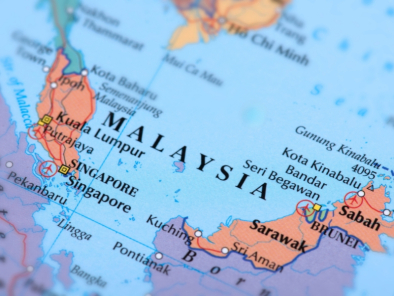
 For the fun lovers,
the top station awaits with a warm welcome where one could get soaked up the
sun, absorb the fun while romancing and fascinating the feel of the magic on
the air.
For the fun lovers,
the top station awaits with a warm welcome where one could get soaked up the
sun, absorb the fun while romancing and fascinating the feel of the magic on
the air.

